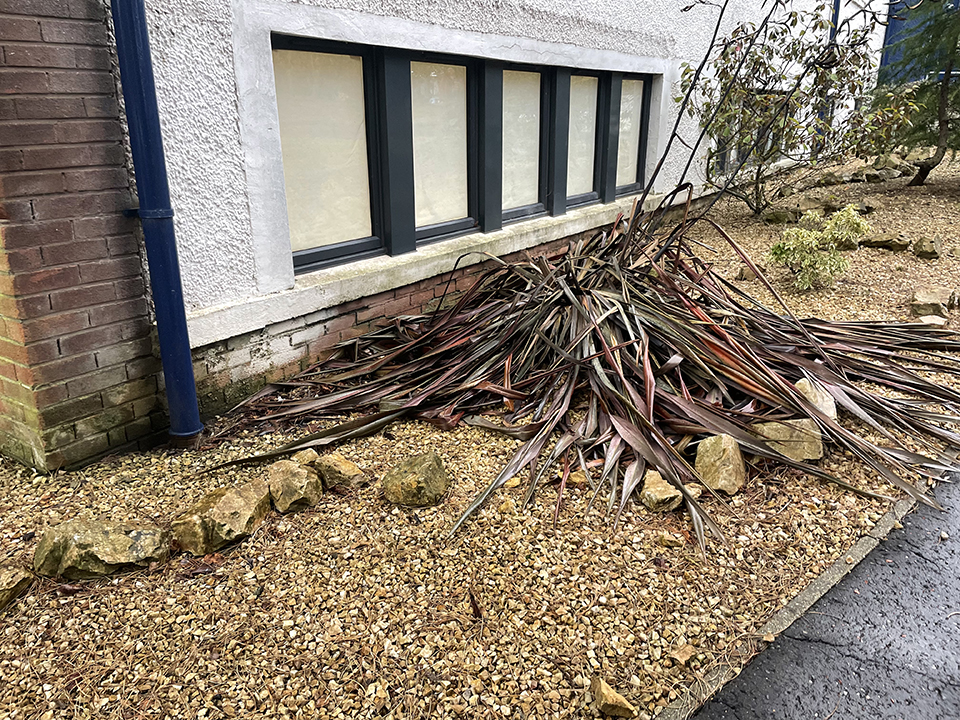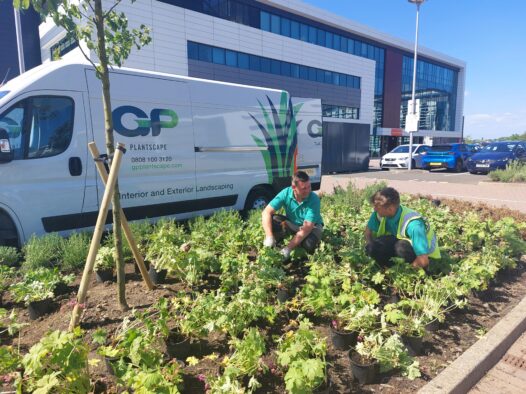You’re not alone.
At GP Plantscape we are seeing lots of cases of frost damaged plant material this winter and are working to help clients rejuvenate their exterior spaces.
But why have plant deaths been so prominent this year and how can we prevent future losses?
Severe Weather
Climate change is impacting our UK weather. In the future we can expect to experience warmer and wetter winters, hotter and drier summers and more frequent and intense weather extremes. These changing temperatures will undoubtedly have an impact on exterior planting.
As we experience warmer summers there could be a tendency to incorporate plants more suited to a Mediterranean climate. But, while these plants may thrive and grow during the summer months and even over milder winters, our temperate maritime climate can be prone to severe cold snaps. In these conditions, less hardy plants unfortunately may succumb to the frost. Drought tolerant plants are more likely to be damaged by cold, wet winters.
In 2022, Scotland recorded the coldest December in 12 years according to the Met Office. Bizarrely, the arctic blast arrived at the end of what was the warmest year on record.
What does frost damage look like?
Frost damage may not be immediately apparent, but over time the leaves will look burnt and turn brown.


Preventable solutions
The examples above are almost certainly irretrievable. Both plants will need to be replaced. So, how can we reduce the risk of plant deaths when facing unpredictable temperatures.
Plant choice – Choosing hardy plants that will withstand low temperatures is key, especially in exposed areas. At GP Plantscape we can specify plants more likely to tolerate temperature extremes or you may want to take a look at the Royal Horticultural Societies list of hardy plants.
Shelter – If you want to take the risk of planting a more vulnerable variety, think carefully about it’s location. Choosing a spot beside a wall or in a more sheltered area will help protect the foliage during particularly cold spells.
South Facing – For extra warmth choose a south facing location.
Frost pockets – Frost pockets are found where there is a hollow or the ground dips. Avoid planting in these areas as they will stay cooler for longer during a freeze.
Mulch – Applying a layer of mulch to cover the roots will help to prevent the cold settling into the plant.
Treatment
It’s not all doom and gloom. Some damaged plants are revivable, by pruning away the dead foliage to encourage new growth once the risk of frost has passed.
If you have frost damaged plants on your commercial exterior grounds and would like an assessment, please call GP Plantscape on 0808 100 3120 and we’ll be happy to conduct a survey and provide you with a potential solution.
Latest News
and plant care tips.
























